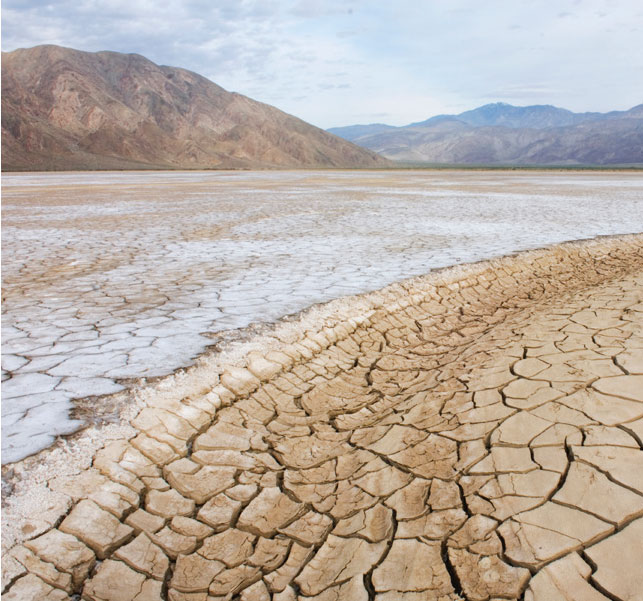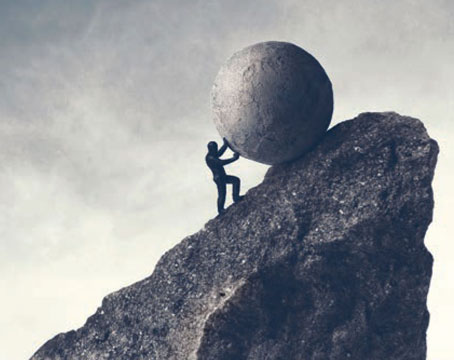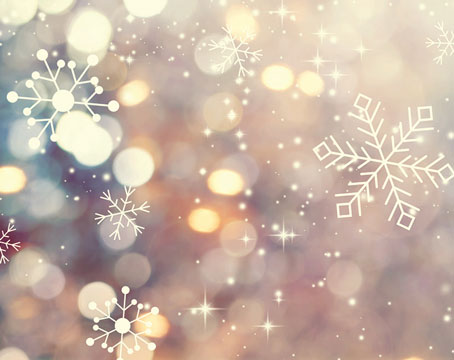 |
| Image courtesy of Getty |
The earth is mostly water—71 percent, to be exact. Our bodies are mostly water, between 45 to 70 percent depending on age, body habitus and hydration. Water is kind of important to life, yet I would guess that most of us don’t really understand how fragile the flow of potable—or even irrigable—water is.
Water comes from basically three places: the sky; the Earth’s surface; and below ground (duh). And its variability as a source is in that order from most variable to least. Also, depending on where you are and your local geography, the relative amounts can vary widely. When we talk about water availability we usually focus on rainfall as it’s easy to see and measure. Less rain equals more drought. But more than half of our water is drawn from underground aquifers, and even more is drawn from that source in some areas than others. However, not all aquifers are created equal, and we’re draining them far faster than they naturally recharge. So, at some point at current usage, they’ll run dry. The Ogallala, underneath most of the Midwest, is our largest aquifer, and estimates are that 70 percent of it will be depleted in the next 50 years.
We can argue over exact numbers, but the fact remains we’re using more water than is naturally replenished. That’s an issue. It’s an issue that’s already led to conflicts in some parts of the world and will likely lead to outright war in the future. It’s more likely that we’ll fight over water than oil.
At the moment, Arizona isn’t liking California very much because of changes to water distribution from the Colorado river. So, what are we doing about it? We can conserve by using less and by evaluating the relative importance of the industries that use the most water. We can recycle water and we can generate fresh water. But we need to acknowledge the problem and address it together. It’s insane that water conservation could be political. Yet some are making fun of low-flow toilets, bans on having a lawn in the desert, or restricting development where there isn’t enough water already. I mean I love almonds, but to grow them you have to flood the fields in hot, dry California. Almonds alone use as much water as all indoor water use in California. And almonds aren’t the most water inefficient crop. Sugarcane is. The point of this is we have to look at everything we do to better manage available resources.
But conservation alone won’t save this precious resource. We need to rethink everything about water, especially given that rainfall trends are falling, and the air is heating up. Yes, both of those are naturally occurring phenomena. The planet has gone through cycles, but it hasn’t seen this much draw down of fresh water before. And it doesn’t much matter why there’s less rain, or warmer air. Arguing why it’s occurring is secondary to acknowledging the reality and doing something about it, or our grandchildren won’t have enough. You’d think that fact alone would motivate people, yet it doesn’t.
We can create fresh water with desalination, at a cost of energy, of course, among other considerations. But these desalination plants can only work in certain areas, cost a lot to build and operate, and have a very long lead time to construct. They likely need to be a part of a multifaceted plan, along with conservation and recycling. And we need to take a hard look at allowing development in areas without water. Putting people in deserts without knowing how to provide sufficient water should be criminal. But it’s not. Sometimes reality conflicts with what you want, and it’s difficult to tell Americans what they can and can’t do. The reality of continued development, a larger population and changing rainfall patterns is prodding us to act, but not quickly enough. The occasional flooding rain can make this difficult to reconcile, but we could find ourselves with water, water, everywhere and not a drop to drink.
Dr. Blecher is an attending surgeon at Wills Eye Hospital.





